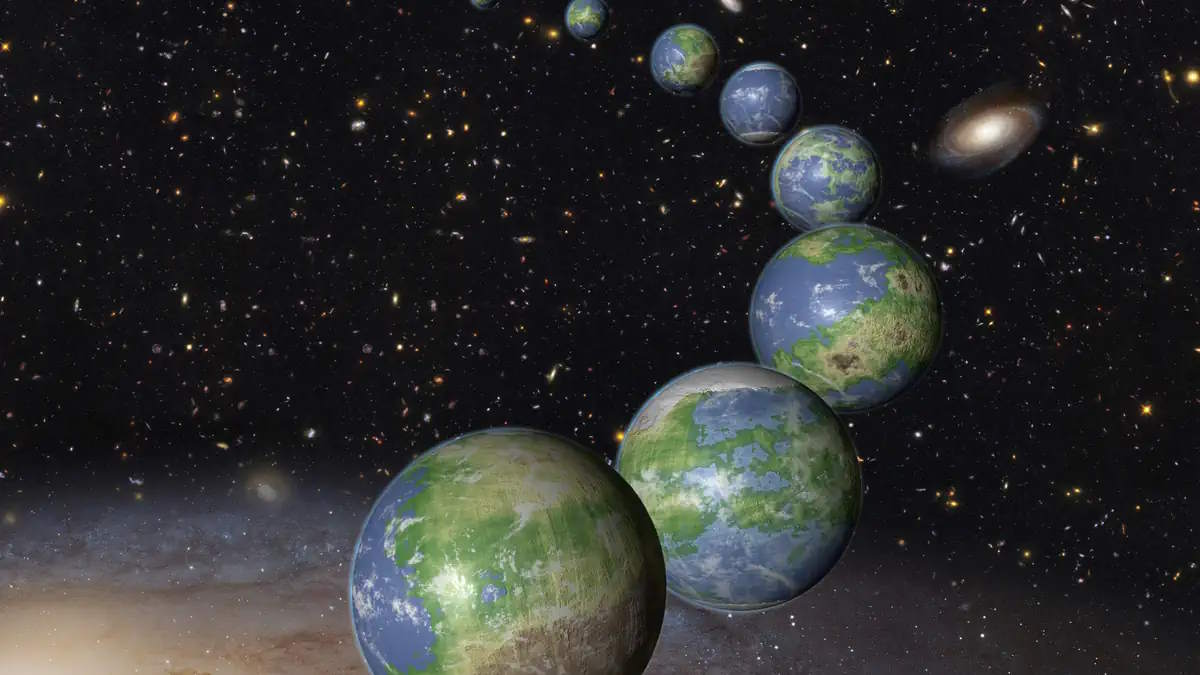A recent study led by Peter Behroozi of the Space Telescope Science Institute (STScI) in Baltimore, Maryland suggests that the vast majority of Earth-like planets in the universe have yet to be born. Using computer simulations to model planet formation around stars in the Milky Way galaxy, Behroozi and his team found that only 8% of potentially habitable planets have already formed. This means that the remaining 92% are yet to be born. The study’s findings have significant implications for our understanding of the prevalence of life in the universe and the prospects for finding it beyond our solar system.
If this hypothesis is correct, it could provide an answer to the Fermi Paradox, which asks why, given the vastness of the universe and the high probability of other intelligent life, we haven’t yet made contact with any other civilizations.
Fermi Paradox
In 1950, the Italian physicist Enrico Fermi was chatting with his colleagues at the Los Alamos National Laboratory (see notes 1). They talked about
But, there is no reliable evidence aliens have visited Earth and we have observed no intelligent extraterrestrial life with current technology nor has SETI found any transmissions from other civilizations. The Universe, apart from the Earth, seems “dead”.
So, where is everybody?
There are a series of possible answers to Fermi’s question. You can read them on Wikipedia and this beautiful article on WaitButWhy.com. One of them (and one of the strongest) is the Great Filter Theory.
The Great Filter theory says that at some point from pre-life to Type III intelligence, there’s a wall that all or nearly all attempts at life hit. There’s some stage in that long evolutionary process that is extremely unlikely or impossible for life to get beyond. That stage is The Great Filter.
WaitButWhy.com
According to the great filter theory, depending on where the great filter is, the human race falls into one of these three categories: “We are rare”, “we are first”, or “We are in trouble”.
We might be the first spacefarer civilization
There are three possibilities regarding the Great Filter:
- If the great filter is behind us, this means we managed to surpass it, and maybe a few other civilizations too, but we still didn’t meet.
- If the great filter is ahead
of us, we’re in trouble because probably we’ll hit this great barrier. - And the third probability: maybe conditions in the universe are just recently, for the first time since the Big Bang, reaching a place that would allow intelligent life to develop, so we’re first, or one of the first few.
The concept of a “great barrier” is one that has fascinated scientists and sci-fi enthusiasts alike for decades. It refers to a hypothetical technological threshold beyond which no civilization can progress. Some believe that this barrier may be the reason why we haven’t yet detected any signs of intelligent life beyond our planet. However, if humans have indeed surpassed this barrier, it raises a host of fascinating questions. For example, are we the first civilization in the universe to do so? And if not, what happened to those that came before us? Answering these questions could shed new light on our place in the cosmos and the nature of intelligent life itself.

A possible answer to the Fermi Paradox: 92% of Earth-Like Planets Have Yet to Be Born
According to a recent study that used data from the Hubble and Kepler space telescopes, 92% of potentially habitable planets in the universe are yet to be born. That means the Earth is actually quite early. The study was published in Monthly Notices of the Royal Astronomical Society titled On the history and future of cosmic planet formation. The study suggests if existing gas within virialized dark matter haloes continues to collapse and form stars and planets, the Universe will form over 10 times more planets than currently exist.
The universe is still young. The Earth itself is 4.5 billion years old, roughly a third of the age of the universe, which is 13.8 billion years old. While stellar formation has slowed in many galaxies in the last 10 billion years, the last star in the universe isn’t expected to burn out for 100 trillion years. That leaves a lot of time for more planets to form.

The paper also references the famous Drake Equation, a probabilistic argument used to arrive at an estimate of the number of active, communicative extraterrestrial civilizations in the Milky Way galaxy. Molly Peeples, co-author of the study explains “There is enough remaining material (after the Big Bang) to produce even more planets in the future, in the Milky Way and beyond”.
So, in the coming billions and trillions of years, we may expect a huge number of Earth-like planets to be born and some intelligent life evolve on them. Maybe we’re the first.
Notes
- Los Alamos National Laboratory (or LANL) was founded during World War II as a secret in Los Alamos, New Mexico; it was a centralized facility to coordinate the scientific research of the Manhattan Project, the Allied project to develop the first nuclear weapons. Now it is one of the largest science and technology institutions in the world. It conducts multidisciplinary research in fields such as national security, space exploration, renewable energy, medicine, nanotechnology, and supercomputing.
Sources
- Fermi Paradox on Wikipedia
- Los Alamos National Laboratory on Wikipedia
- The Fermi Paradox on WaitButWhy.com
- Earth May Have Formed Earlier Than 92% of Other Habitable Planets on iflscience.com
- “On the history and future of cosmic planet formation” on Oxford academic website
- Great Filter on Wikipedia
- “Most Earth-Like Worlds Have Yet to Be Born, According to Theoretical Study” on the NASA website
- Space Shuttle Endeavour’s Touchdown Meets Columbia’s Salute [An amazing photo from the past] - February 29, 2024
- Moon Landings: All-Time List [1966-2024] - February 23, 2024
- From Orbit to Ordinary: 10 Earthly Applications of Space Technology - January 23, 2024

